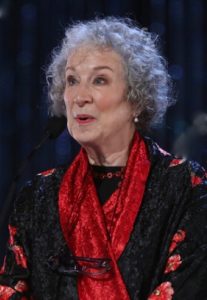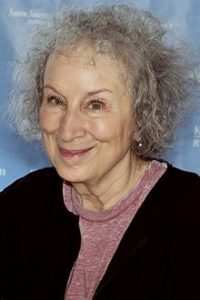There was a time, which lasted quite some time, when I wouldn’t think of leaving home without wearing makeup. To face the world with a naked face was unthinkable to me then. It just wasn’t done.
Without makeup brightening my colorless complexion – pale skin and hair, pale eyes, nearly invisible lashes and brows – I looked half-dead, or ready for bed. Makeup was as necessary to me as clothing when entering the outside world.
And besides, there was my mother’s often-repeated directive echoing in my mind: “You must always look your best, honey!” As a member of the appearances-are-paramount generation, she drummed this belief into her three daughters’ heads.
I looked best with makeup on my face.
Fast forward many decades to today, when my bulging old makeup case – with its tubes of golden-hued foundation creams, rosy blush-on powders, subtle bluish eye shadows, glossy pinkish lipsticks, light-brown eyebrow pencils, and lash-lengthening wands of dark mascara– sits on my bathroom shelf gathering dust.
But who wears makeup anymore anyway – especially now, during this COVID-19 pandemic, when faces are covered with cloth masks from the top of the nose to beneath the chin? Why bother with foundation or blush-on — or even lipstick – when they will only be hidden?
I read recently that the global beauty industry, which generates something like $500 billion a year and accounts for millions of jobs, has suffered a drop of roughly 50 percent in sales compared with a year ago. Lipstick sales have been especially low.
This makes perfect sense, doesn’t it? People are working from home now, not dressing for success or to impress, nor going out on the town. Most of us are spending our days at home in front of our computer screens in our scruffy old play clothes or pajamas.
This pandemic has even managed to put a pall on beauty.
And then, of course, there’s age. We can’t forget that particular pall. These days I see in the bathroom mirror a person I have trouble recognizing. I see a face that’s sunken, shrunken, and saggy, with deep-set pale eyes and a thin colorless mouth fallen at the corners. All quite beyond the help of makeup.
Who ARE you? I want to ask that old person in the mirror. Where did I go? The other day, I stared at this image long and hard and thought: If my mother had lived to the age I am now, would she have looked like this? If so, what would she have done to “look her best”?
My mother died of brain cancer (glioblastoma) in October 1984 at the age of 69, when I was 39. Ever since, it seems, I’ve been quietly seeking out role models in older women who might point the way to a meaningful and “beautiful” (inside and out) old age.
In fact, one of my main motivations in starting this weekly WOW blog nearly six years ago was to regularly interview women over the age of seventy on this among other topics to learn their secrets.
(The pandemic has also curtailed such interviews. I haven’t done any interviews in the past year because the older women of accomplishment here in San Miguel de Allende, Mexico, whom I’ve approached have not wished to break their strict isolation for fear of contracting COVID-19; and I’ve always preferred doing in-person interviews.)
So I’ve had to look elsewhere for older role models lately. This week I lighted on Margaret Atwood.

Canadian novelist, poet, literary critic, essayist, and teacher Margaret Atwood is one of my living sheros. In November she’ll turn 82; and as far as I know, she’s still writing, still creating, still dazzlingly brilliant. A role model indeed.
Since 1961, when she was first published, I learned, Margaret Atwood has produced 18 novels, 18 books of poetry, 11 books of nonfiction, nine collections of short fiction, eight children’s books, and two graphic novels. Her most recent novel, The Testaments (2019) is a sequel to The Handmaid’s Tale (1985), which was made into an award-winning television series produced by Hulu and starring Elisabeth Moss that premiered in April 2017.

I marvel at Margaret Atwood’s face in recent photographs: Yes, she’s wearing makeup, including, or should I say, especially, mascara. It’s clear she’s not striving to look younger than her years. I’m assuming she just wants to look her best. She’s a woman of immense accomplishment who doesn’t need to prove anything to anyone, least of all youthfulness or superficial beauty. Ah, to be like her when I grow up, I think.
I sometimes imagine having conversations with my mother now. When I explain to her the uselessness of wearing makeup to “look one’s best” during this ongoing awful pandemic – especially for ordinary people like me and not rock stars like Margaret Atwood – my mother reluctantly concedes the point.
“Well, then,” I imagine her saying to me, “promise me you’ll wear mascara. At least mascara. Without it you look dead. And you’re not dead yet, honey.”
~ ~ ~ ~ ~ ~
Confession: I’m beginning to actually like hiding my aging face behind a face mask these days and not having to get all made up to “prepare a face to meet the faces that I meet” (from T.S. Eliot’s 1915 poem, “The Love Song of J. Alfred Prufrock”).
I even had an inspired thought recently. It’s a fun idea I think my mother would approve of: Find a younger, happy photo of your face (in full makeup), enlarge it to actual face size, transfer it onto plain cotton fabric, then sew this image onto an existing mask or use it to make a new one. Just imagine the surprized expressions on the faces that you meet!
[See this link for the simple how-to of photo transfers onto fabric: https://www.youtube.com/watch?v=D0ffcWlnysM]
